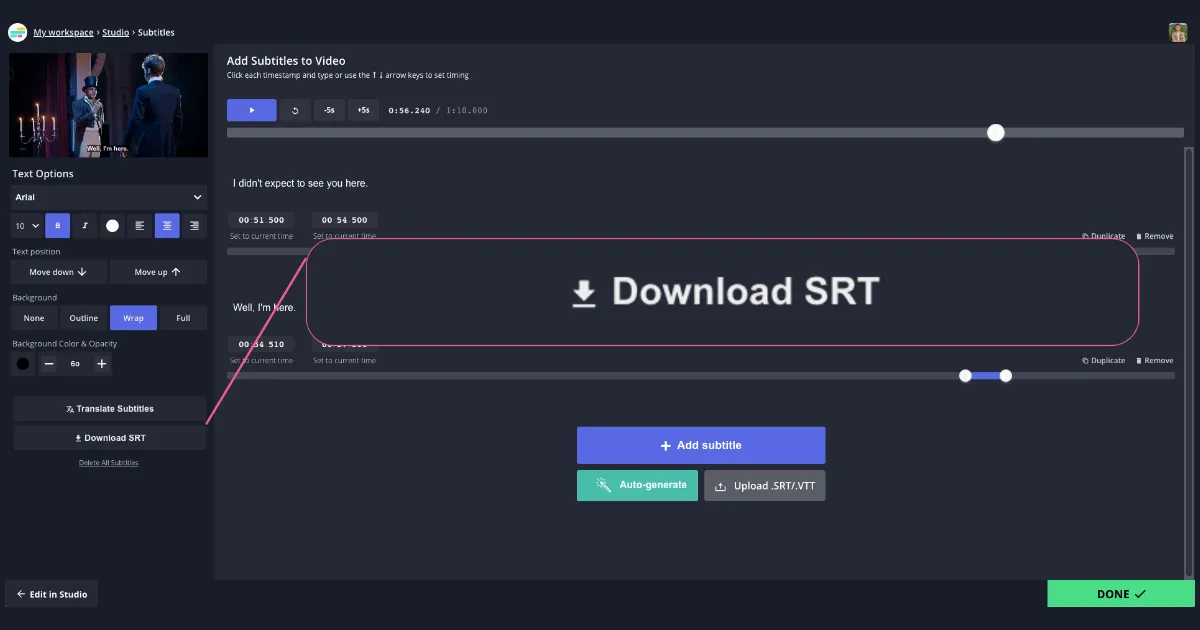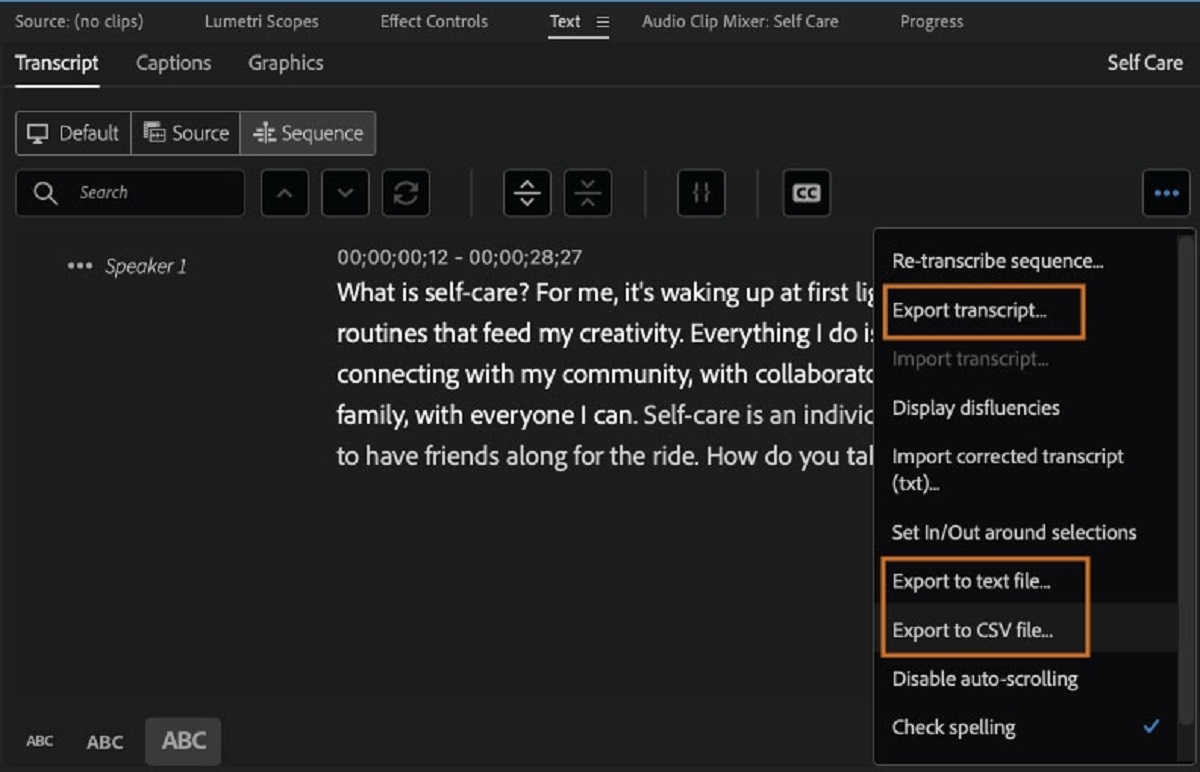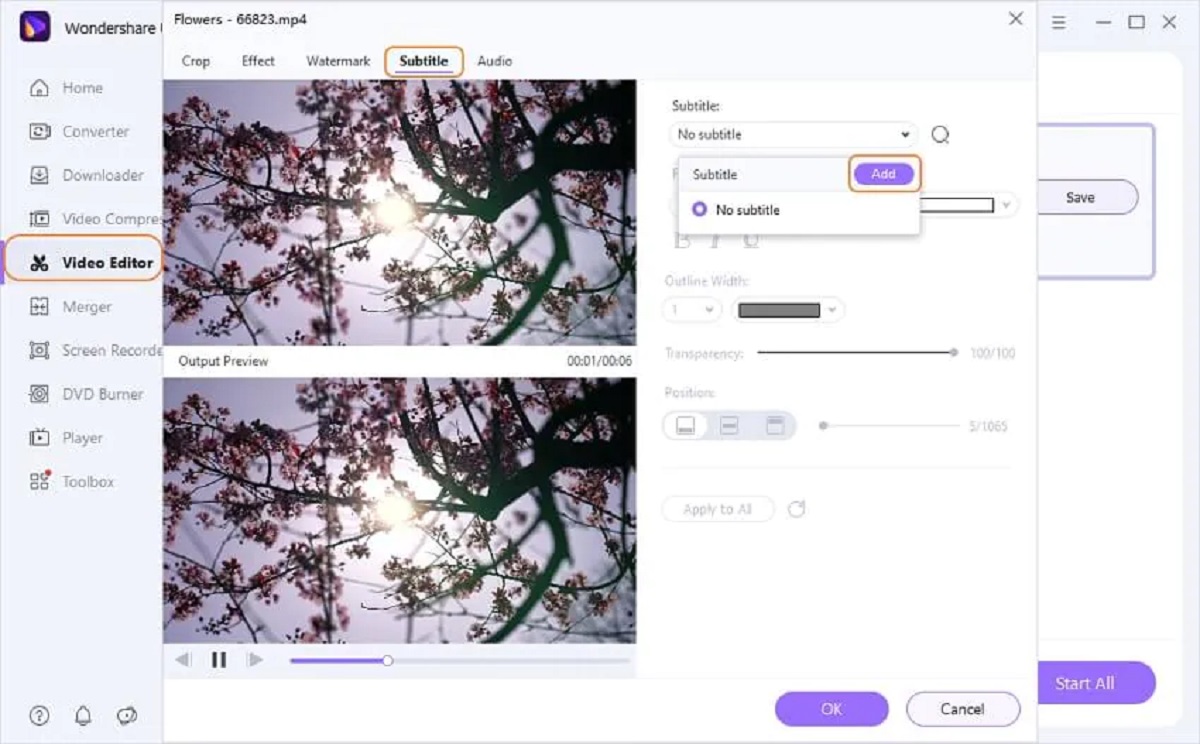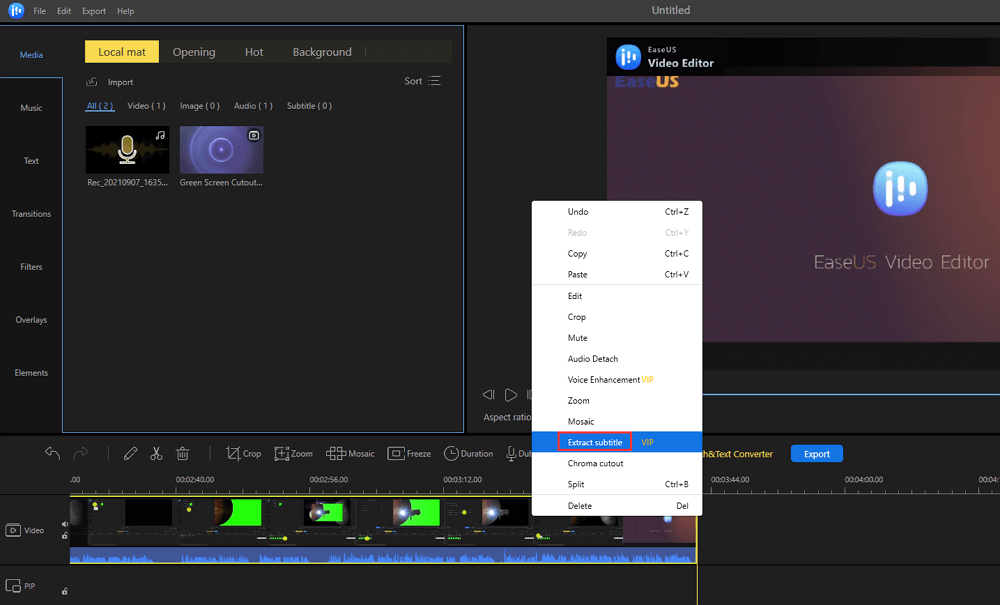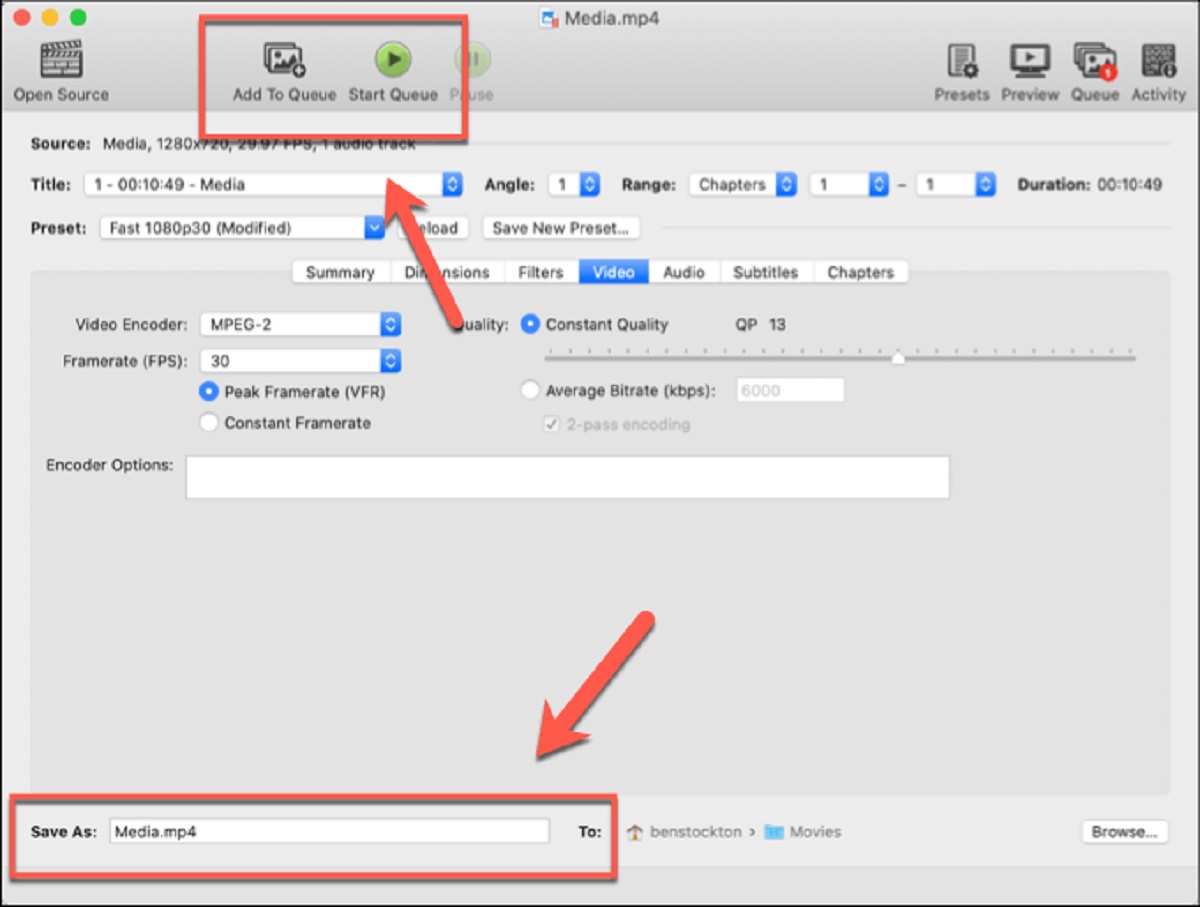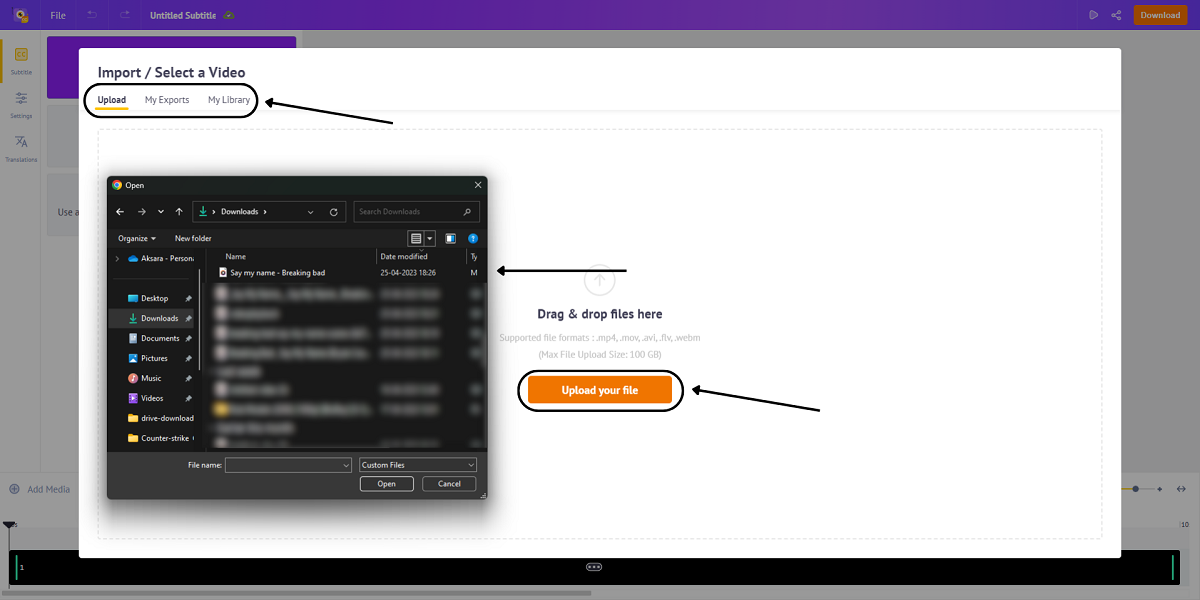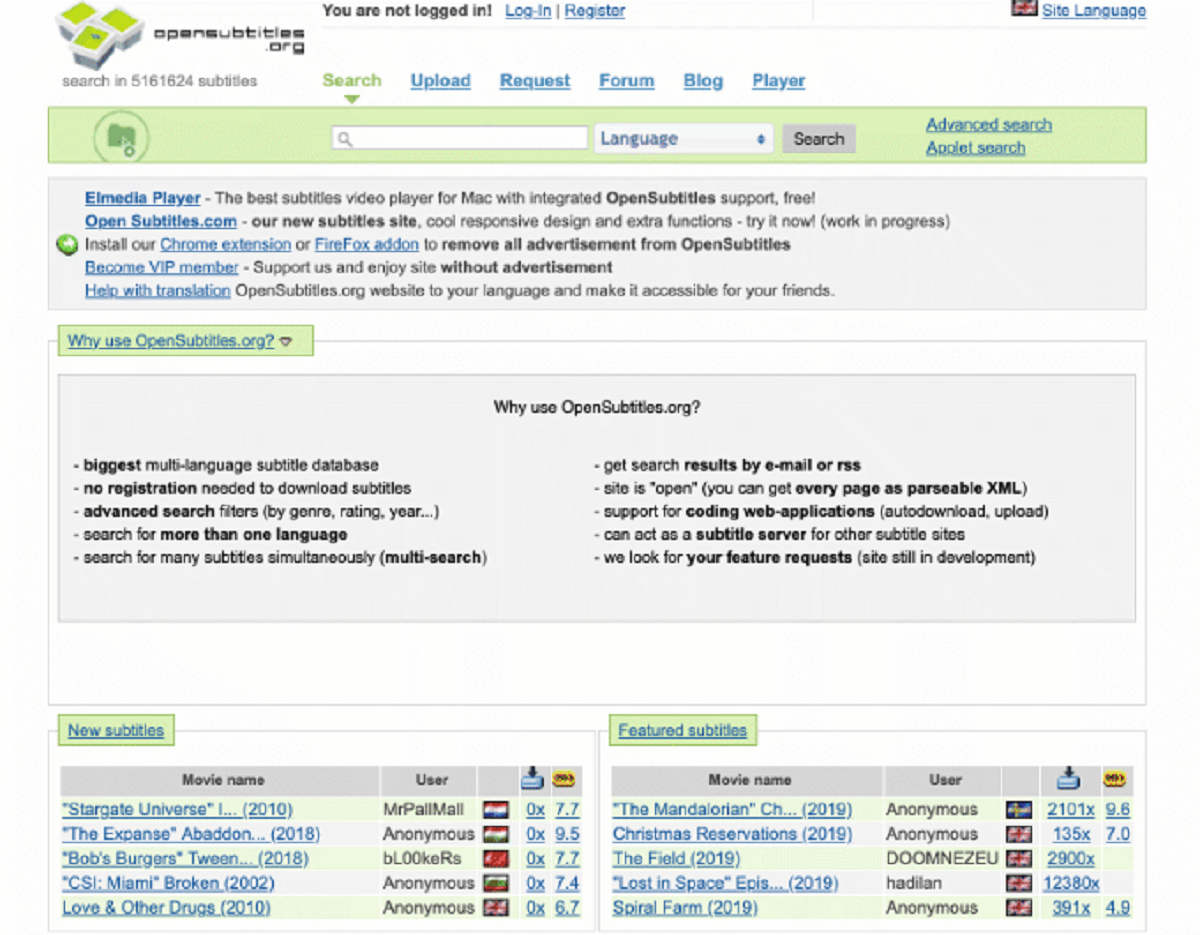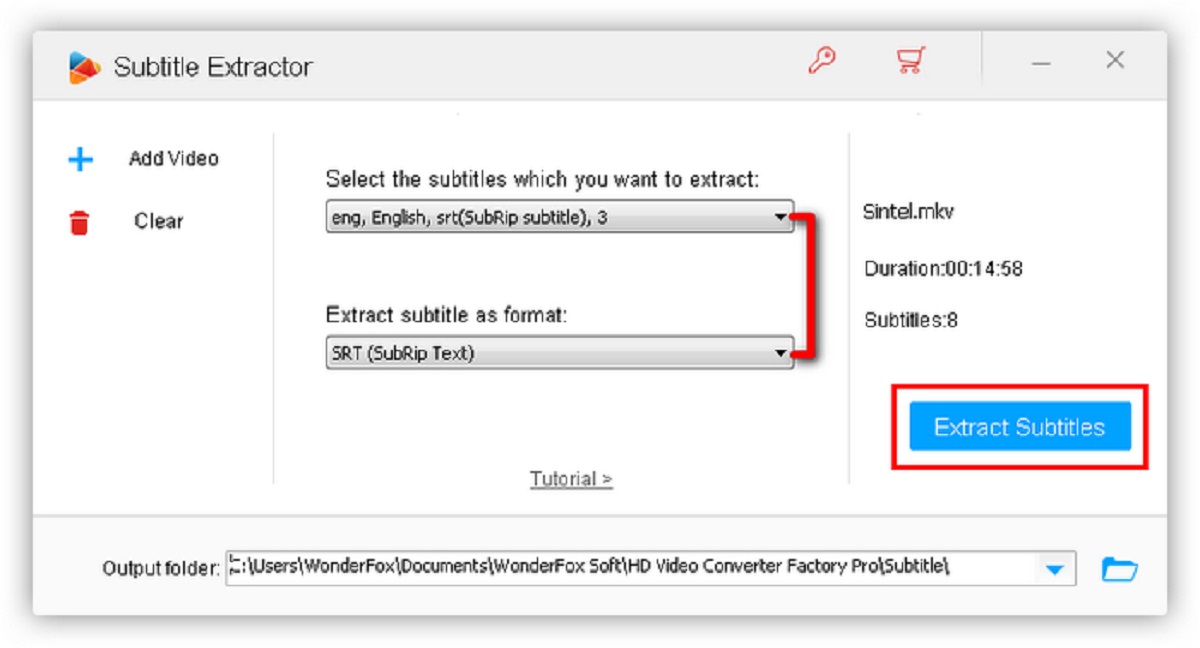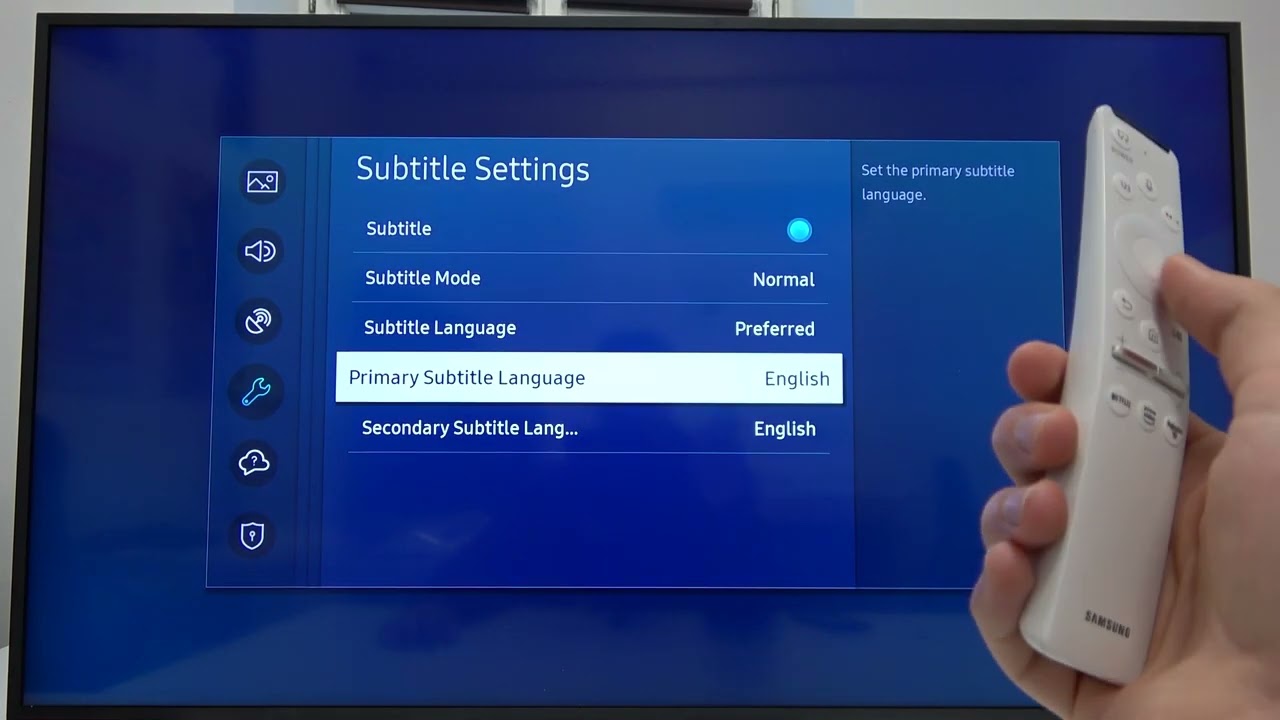Introduction
Subtitles are an essential component of any multimedia content, whether it’s a movie, TV show, or online video. They provide text-based translations or transcriptions of the dialogues and audio in a video, making it accessible to a wider audience. Srt subtitles, also known as SubRip subtitles, are one of the most commonly used subtitle formats.
Creating srt subtitles may seem like a daunting task, but with the right tools and a step-by-step approach, it can be a straightforward process. In this article, we will guide you through the process of making srt subtitles, from transcribing the audio to setting the timing and adding the text.
Whether you are a filmmaker looking to provide subtitles for your movie, a content creator aiming to reach a broader audience, or simply someone interested in adding subtitles to your favorite videos, learning how to make srt subtitles can be a valuable skill.
This article will walk you through the necessary tools needed for creating srt subtitles and provide a step-by-step guide on how to transcribe the audio, set the timing for each line, add text, and save the file in the srt format. We will also share some tips to help you create accurate and high-quality srt subtitles.
So, if you’re ready to dive into the world of subtitling and enhance the accessibility and reach of your multimedia content, let’s get started on creating srt subtitles!
What are Srt Subtitles?
Srt subtitles, short for SubRip subtitles, are a widely used subtitle format in the digital media industry. They are plain text files that contain timed captions or translations for audio and video content. Srt subtitles are compatible with most media players and can be easily added or removed from video files.
Unlike other subtitle formats, such as VobSub or DVD subtitles, srt subtitles are human-readable and editable since they are in a simple text format. This makes them accessible to a wider audience and provides flexibility for content creators to modify or translate the subtitles as needed.
A typical srt subtitle file consists of multiple subtitle entries, each containing three main components:
- Subtitle number: Each subtitle is assigned a sequential number for easy referencing.
- Timecode: The timecode specifies the duration when the subtitle should appear and disappear on the screen. It is represented in the format of hours, minutes, seconds, and milliseconds.
- Subtitle text: This is the actual text of the subtitle, which is displayed on the screen during the specified duration.
For example:
1 00:00:01,000 --> 00:00:05,000 Welcome to the world of srt subtitles! 2 00:00:06,000 --> 00:00:10,000 These subtitles provide a written representation of the audio in a video file.
Srt subtitles allow viewers to understand and follow the dialogues, regardless of their language proficiency or hearing capabilities. They are particularly useful for international audiences, viewers with hearing impairments, or those watching videos in noisy environments.
Furthermore, srt subtitles enable content creators to make their videos more inclusive and accessible. By providing accurate and well-timed subtitles, they can reach a broader audience and ensure that their content can be understood and enjoyed by individuals from diverse backgrounds.
In the next section, we will explore the advantages of using srt subtitles and why you should consider incorporating them into your multimedia content.
Why Use Srt Subtitles?
Srt subtitles offer numerous benefits for both content creators and viewers. Let’s explore why you should consider using srt subtitles in your multimedia content:
Accessibility: Srt subtitles make your content accessible to a wider audience, including those who are deaf or hard of hearing. By providing written text for the audio, you ensure that everyone can understand and enjoy your videos, regardless of their hearing abilities.
Language Inclusivity: Srt subtitles allow you to reach an international audience by providing translations or transcriptions in multiple languages. This opens up opportunities to attract viewers from different regions and language backgrounds, expanding the reach and impact of your content.
Improved Comprehension: Subtitles can significantly enhance viewers’ understanding of the content, especially when dealing with complex topics, accents, or unfamiliar languages. Srt subtitles provide a visual aid that helps viewers follow the dialogues and grasp the nuances of the audio, resulting in a more comprehensive viewing experience.
SEO Benefits: Including srt subtitles in your videos can also boost your search engine rankings. Search engines can index the text of the subtitles, making it easier for your content to appear in relevant search results. Additionally, subtitles enhance the user experience, leading to longer watch times and engagement, which are positive ranking factors.
Improved User Experience: Subtitles can improve the overall user experience of your videos. Viewers have the flexibility to watch your content in various environments, such as public spaces or quiet settings, without relying solely on audio. Subtitles also help viewers follow along when the audio quality is poor or when watching videos without sound.
Compliance with Accessibility Guidelines: Providing srt subtitles aligns with accessibility guidelines and legal requirements in many jurisdictions. By including subtitles, you ensure that your content meets the standards of accessibility and inclusion, promoting equal access to information for all.
Whether you are a content creator, educator, or business owner, incorporating srt subtitles into your multimedia content brings numerous advantages. It not only improves accessibility and inclusivity but also enhances the viewing experience and widens your audience reach. Now that we understand the importance and benefits of srt subtitles, let’s explore the tools needed to create them in the next section.
Tools Needed to Create Srt Subtitles
To create srt subtitles, you will need the following tools:
- Video Editing Software: You will need video editing software that allows you to import your video file and synchronize the subtitles with the audio. Popular video editing software options include Adobe Premiere Pro, Final Cut Pro, and DaVinci Resolve.
- Transcription Software: To transcribe the audio accurately, you can use specialized transcription software like Express Scribe or Inqscribe. These tools provide features that facilitate the process of transcribing audio content.
- Text Editor: A text editor, such as Notepad (Windows) or TextEdit (Mac), will be useful for manually creating and editing the srt subtitle file. You can also use more advanced editors like Subtitle Workshop or Aegisub that offer additional features for subtitle creation and editing.
- Timecode Calculator: A timecode calculator helps calculate the duration and timing of each subtitle entry based on the video’s frame rate. This ensures accurate synchronization between the subtitles and the video. There are online timecode calculators available, or you can use dedicated software like Subtitle Edit or Subtitle Workshop.
These tools provide the necessary functionalities to create and synchronize srt subtitles effectively. Depending on your specific requirements and preferences, you can choose the most suitable tools that fit your workflow and budget.
Additionally, it’s important to ensure that your video and audio files are in good quality, as this will directly impact the accuracy and clarity of the subtitles. Use high-resolution videos with clear audio to facilitate the transcription process and create subtitles of the highest quality.
Now that you have the essential tools ready, we will guide you through the step-by-step process of making srt subtitles in the upcoming sections. Stay tuned!
Steps to Make Srt Subtitles
Creating srt subtitles involves several steps, from transcribing the audio to setting the timing and adding the text. Let’s take a look at the step-by-step process:
Step 1: Transcribe the Audio
The first step is to transcribe the audio of your video. Use the transcription software of your choice to listen to the audio and accurately write down the dialogue or narration. Ensure that the transcription is verbatim and captures all the spoken words.
Step 2: Set the Timing for Each Line
Once you have the transcription, it’s time to set the timing for each subtitle line. You can use a timecode calculator or video editing software to determine the start and end points of each subtitle entry. Ensure that the timing aligns smoothly with the audio and video.
Step 3: Add the Text to Each Line
Next, add the text you transcribed to each subtitle entry. Make sure that the subtitles are concise, clear, and easy to read. Keep the text within a reasonable character limit to ensure readability on screens of various sizes.
Step 4: Save the File as Srt
Once you have added the text to each subtitle line, save the file in the srt format. Use a plain text editor and ensure that you save the file with the .srt extension.
Step 5: Check and Edit the Srt Subtitles
After saving the srt subtitle file, it’s essential to review and edit the subtitles for accuracy and timing. Play the video alongside the subtitles to check for any synchronization issues or errors. Make necessary adjustments to ensure optimal timing and alignment.
Repeat this process for each subtitle entry in the video to create a comprehensive set of srt subtitles.
With these five steps, you can create srt subtitles for your video content. It may take some practice to master the art of subtitle creation, but with time and experience, you will be able to produce accurate and professional-looking subtitles.
In the following sections, we will provide additional tips and best practices to help you create accurate and high-quality srt subtitles.
Step 1: Transcribe the Audio
The first step in creating srt subtitles is transcribing the audio of your video. Transcribing involves listening to the audio carefully and accurately documenting the spoken words. This process ensures that you have a written representation of the dialogue or narration in the video.
To transcribe the audio effectively, follow these guidelines:
1. Choose the Right Transcription Software
Use transcription software that suits your needs and preferences. Look for software that offers features like adjusting playback speed, keyboard shortcuts for pausing and rewinding, and the ability to easily navigate through the audio.
2. Use Quality Headphones
Invest in a good pair of headphones to listen to the audio clearly. Clear audio quality will make it easier for you to understand and transcribe the spoken words accurately.
3. Start with Clear Segments
Break down the audio into shorter segments, such as sentences or paragraphs, to make transcription more manageable. Focus on transcribing one segment at a time before moving on to the next.
4. Replay as Needed
If there are parts of the audio that are difficult to understand or contain unclear words, don’t hesitate to replay those sections multiple times to ensure accurate transcription.
5. Verbatim Transcription
Transcribe the dialogue or narration verbatim, capturing every spoken word, including pauses, filler words, and any other verbal expressions. This ensures that the subtitles reflect the audio as accurately as possible.
6. Punctuation and Formatting
Include appropriate punctuation, such as commas, question marks, and exclamation marks, to reflect the intonation and meaning of the spoken words. Use formatting techniques, like italics or capital letters, to denote emphasized or shouted dialogue.
Remember, precise and accurate transcription is crucial for creating high-quality srt subtitles. Take your time to transcribe the audio carefully, ensuring that you capture all the essential details. Once you have completed the transcription, you can move on to the next step of setting the timing for each line of the subtitles.
Step 2: Set the Timing for Each Line
After transcribing the audio, the next step in creating srt subtitles is to set the timing for each line. This step ensures that the subtitles appear and disappear at the appropriate moments in the video. To set the timing accurately, follow these guidelines:
1. Use a Timecode Calculator
A timecode calculator is an essential tool for determining the start and end points of each subtitle entry. This tool takes into account the video’s frame rate and allows you to calculate the time duration in hours, minutes, seconds, and milliseconds.
2. Understand the Visual and Audio Cues
During playback, pay attention to the visual and audio cues to determine when each subtitle should appear and disappear. Look for pauses between dialogue, scene changes, or any other visual or auditory cues that indicate a change in subtitle timing.
3. Set the Start Time
Set the start time of each subtitle entry by identifying the exact moment in the video when the text should appear. It should coincide with the first spoken word or relevant visual cue in the video.
4. Consider Reading Speed
Take into account the average reading speed of viewers when setting the duration of each subtitle line. Aim for a comfortable reading speed to ensure that viewers have enough time to read and comprehend the text without feeling rushed.
5. Set the End Time
Set the end time of each subtitle entry by determining the moment when the text should disappear from the screen. This should align with the completion of the spoken dialogue or any accompanying visual cues.
6. Maintain Consistency
Ensure consistency in timing throughout the entire subtitle file. Subtitles should appear and disappear at regular intervals, avoiding abrupt transitions or excessively long durations for each line.
Remember, precision and synchronization are key when setting the timing for each subtitle line. Take the time to carefully align the subtitles with the video, ensuring that they appear and disappear at the appropriate moments. Once you have set the timing for each line, you can proceed to the next step of adding the text to each subtitle entry.
Step 3: Add the Text to Each Line
After setting the timing for each subtitle in the previous step, it’s time to add the text to each subtitle entry. This step involves inserting the transcribed dialogue or narration into the designated subtitle lines. Follow these guidelines to ensure accurate and clear subtitle text:
1. Concise and Clear Language
Keep the subtitles concise and use clear language to convey the meaning effectively. Avoid overly complex or lengthy sentences, as they can be difficult for viewers to read and comprehend.
2. Readability Considerations
Consider the font size, style, and color of the subtitles to ensure maximum readability. Use fonts that are easy to read and provide sufficient contrast with the video background. Keep in mind that subtitles may be viewed on different devices and screen sizes.
3. Capturing Context
Ensure that the subtitle text captures the context of the dialogue or narration accurately. Use contextual cues, such as brackets or ellipses, to provide additional information or indicate pauses in speech.
4. Timing Adjustments
If needed, make minor adjustments to the timing of the subtitle text to ensure optimal synchronization with the audio and video. This may involve slight shifts in the start or end time of each subtitle entry.
5. Proofread and Edit
Thoroughly proofread and edit the subtitle text for any grammatical errors, typos, or inconsistencies. Ensure that it aligns with the original transcription and reflects the intended meaning accurately.
6. Style and Formatting
Consider using formatting techniques for emphasis, such as italics or bold, when appropriate. This can help convey the tone, mood, or significance of certain words or phrases in the dialogue.
By carefully adding the transcribed text to each subtitle line, you ensure that the subtitles are clear, readable, and accurately represent the audio content. Once you have added the text to each line, you can move on to the next step of saving the file as a srt subtitle file.
Step 4: Save the File as Srt
Once you have added the text to each subtitle line and finalized the timing, it’s time to save the subtitle file in the srt format. Saving the file in the correct format ensures compatibility with various media players and subtitle rendering software. Follow these guidelines to save your subtitles as srt:
1. Use a Plain Text Editor
Open a plain text editor, such as Notepad (Windows) or TextEdit (Mac), which allows you to save files in simple text formats.
2. Format the Srt Structure
Ensure that your subtitle file adheres to the standard structure of srt files. Each subtitle entry should be separated by a blank line and contain a sequential subtitle number, timecodes, and the associated subtitle text.
3. Save as a Plain Text File
When saving the subtitle file, choose the option to save it as a plain text file. Make sure to use the .srt file extension. For example, “example.srt”.
4. Encoding Considerations
Pay attention to the encoding settings when saving the srt file. It is recommended to use UTF-8 encoding to ensure compatibility across different platforms and to support a wide range of characters.
5. Check File Name and Location
Give the subtitle file an appropriate and descriptive file name that reflects the content being subtitled. Choose a suitable location to save the file where you can easily locate it when needed.
6. Backup and Version Control
Make backup copies of your srt subtitle file and consider implementing version control to track changes and revisions. This ensures that you have access to previous versions in case any modifications or updates are required.
By saving your subtitle file as a properly formatted and named srt file, you ensure compatibility with various media players, video editing software, and online platforms. The next step involves reviewing and editing the srt subtitles for accuracy and synchronization, which we will cover in the following section.
Step 5: Check and Edit the Srt Subtitles
After saving your srt subtitle file, it is crucial to review and edit the subtitles for accuracy, synchronization, and overall quality. The goal is to ensure that the subtitles are clear, properly timed, and aligned with the audio and visual content of the video. Follow these guidelines to effectively check and edit your srt subtitles:
1. Playback with Video
Play the video alongside the subtitles to check the timing and synchronization. Ensure that each subtitle appears and disappears at the appropriate moments, aligning with the corresponding dialogues or significant visual cues.
2. Verify Readability
Assess the readability of the subtitles by considering factors such as font size, style, color, and contrast with the video background. Ensure that the subtitles are easily readable on screens of various sizes and devices.
3. Correct Timings
If any subtitles appear or disappear too early or too late, adjust the timing to ensure smooth synchronization with the audio and video. Make sure that viewers have sufficient time to read each subtitle comfortably.
4. Edit Text and Grammar
Review the text of each subtitle for grammatical errors, typos, and clarity. Edit and refine the wording as needed, ensuring that the subtitles accurately convey the intended meaning of the dialogue or narration.
5. Consistency and Style
Ensure consistent formatting, style, and punctuation throughout the subtitles. Avoid inconsistencies in capitalization, punctuation marks, and other formatting elements that can distract or confuse viewers.
6. Cultural Sensitivity
Take cultural sensitivity into account when editing subtitles, particularly when translating dialogue or including cultural references. Verify the accuracy of translations and ensure that they are respectful and appropriate.
Repeat the checking and editing process as necessary to fine-tune your subtitles and achieve the desired quality. The aim is to provide viewers with clear, accurate, and enjoyable subtitle experience that enhances their understanding and enjoyment of the video content.
Following these steps will help you create polished and professional srt subtitles that enhance the accessibility and impact of your videos. In the next section, we will provide some additional tips for creating accurate and high-quality srt subtitles.
Tips for Creating Accurate Srt Subtitles
When creating srt subtitles, it is essential to strive for accuracy and quality to ensure an optimal viewing experience for your audience. Here are some valuable tips to consider when creating accurate and high-quality srt subtitles:
1. Time Subtitles Appropriately
Ensure that the timing of each subtitle is appropriate, allowing viewers enough time to read and comprehend the text. Avoid displaying subtitles for too short or too long durations, and consider the average reading speed of your target audience.
2. Use Readable Fonts
Choose fonts that are clear and easily readable on screens of different sizes. Stick to standard fonts like Arial, Helvetica, or Calibri, and avoid decorative or stylized fonts that may hinder legibility.
3. Maintain Consistent Styling
Ensure consistency in subtitle fonts, colors, and formatting throughout the video. Consistent styling enhances the visual appeal and ensures a cohesive subtitle experience for viewers.
4. Be Mindful of Space Constraints
Keep subtitles concise and avoid overcrowding the screen with too much text. Maintain a balance between providing accurate translations and ensuring subtitles are easy to read and digest within the limited space.
5. Proofread and Edit Thoroughly
Review your subtitles multiple times, checking for grammatical errors, typos, and inconsistencies. Proofread the text to ensure accuracy and proper grammar, as even minor mistakes can impact the quality and credibility of the subtitles.
6. Consider Viewer Feedback
Take into consideration feedback from viewers and make necessary adjustments based on their suggestions. Pay attention to their comments regarding timing, readability, or translation accuracy to continuously improve the quality of your subtitles.
7. Cultural Sensitivity
Be mindful of cultural sensitivities and ensure that translations, transcriptions, and subtitles are respectful and accurate. Consider cultural nuances, idiomatic expressions, and proper localization to provide an inclusive and culturally sensitive experience for your viewers.
By following these tips, you can enhance the accuracy and quality of your srt subtitles, ensuring optimal comprehension and enjoyment of your video content. Keep in mind that practice and continuous improvement are key to mastering the art of creating accurate and high-quality srt subtitles.
Conclusion
Creating srt subtitles is a valuable skill that can significantly enhance the accessibility, reach, and user experience of your multimedia content. By following the step-by-step process outlined in this article, you can create accurate and high-quality srt subtitles that engage and captivate your audience.
We began by understanding what srt subtitles are and why they are important in making your content more inclusive and accessible. We explored the essential tools needed for creating srt subtitles, such as video editing software, transcription software, and a text editor.
We then delved into the step-by-step process of making srt subtitles, which includes transcribing the audio, setting the timing for each line, adding the text, and saving the file as an srt subtitle file. Each step requires attention to detail and precision to ensure a seamless subtitle experience for viewers.
Additionally, we provided tips for creating accurate and high-quality srt subtitles, including considerations for timing, readability, styling, and proofreading. These tips can help you refine your subtitle creation process and deliver subtitles that are clear, concise, and visually appealing.
Remember, creating srt subtitles requires practice, attention to detail, and continuous improvement. As you progress, solicit feedback from viewers and make adjustments to further enhance the quality and accuracy of your subtitles.
By incorporating srt subtitles into your multimedia content, you are making strides towards inclusivity, accessibility, and improved user experience. Your subtitles will enable a wider audience to engage with your content, irrespective of language barriers or hearing impairments.
So, take the knowledge and tools you have gained from this article, and embark on the journey of creating impactful and accurate srt subtitles. Open up your content to new audiences and empower individuals from diverse backgrounds to connect with and enjoy your videos.







